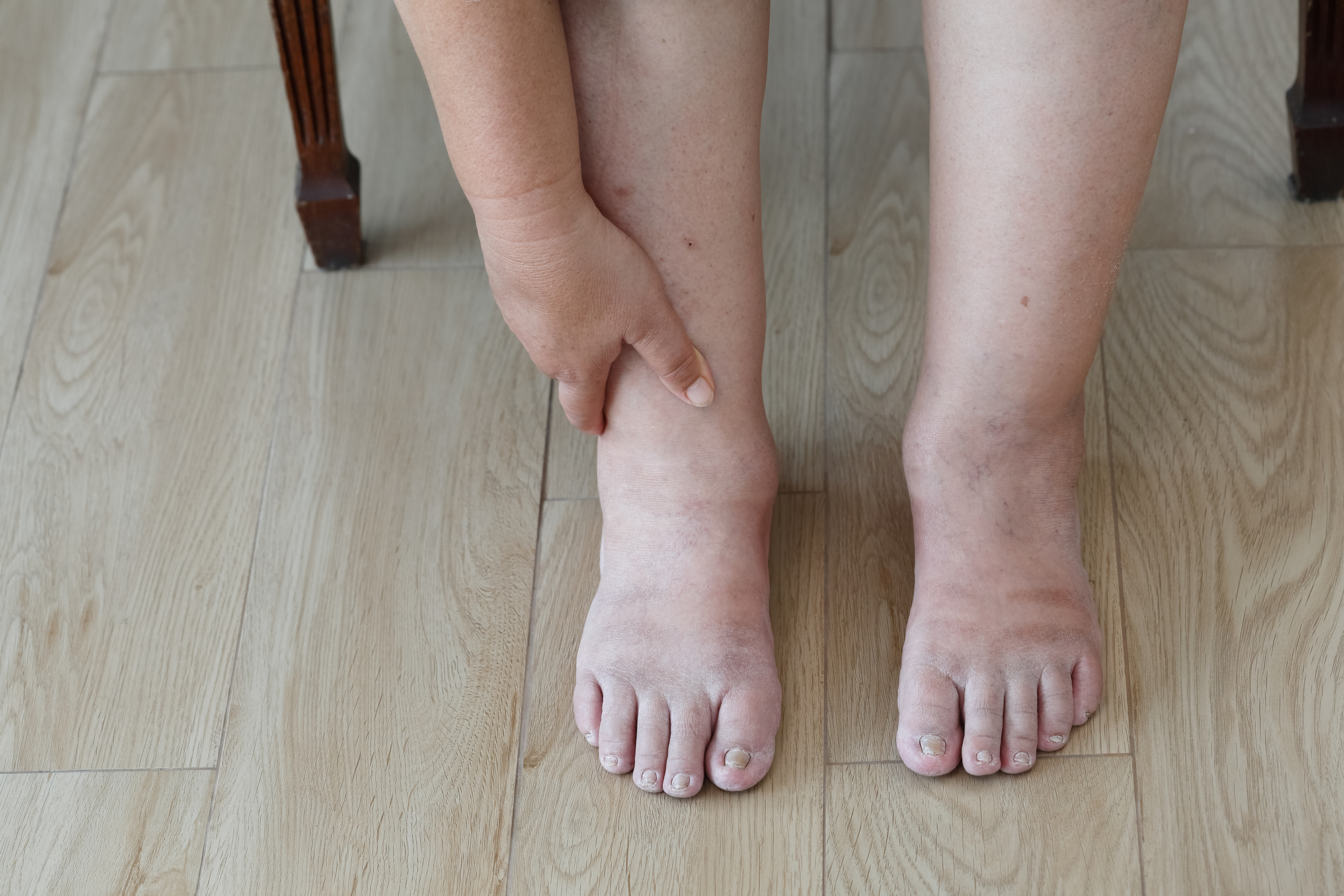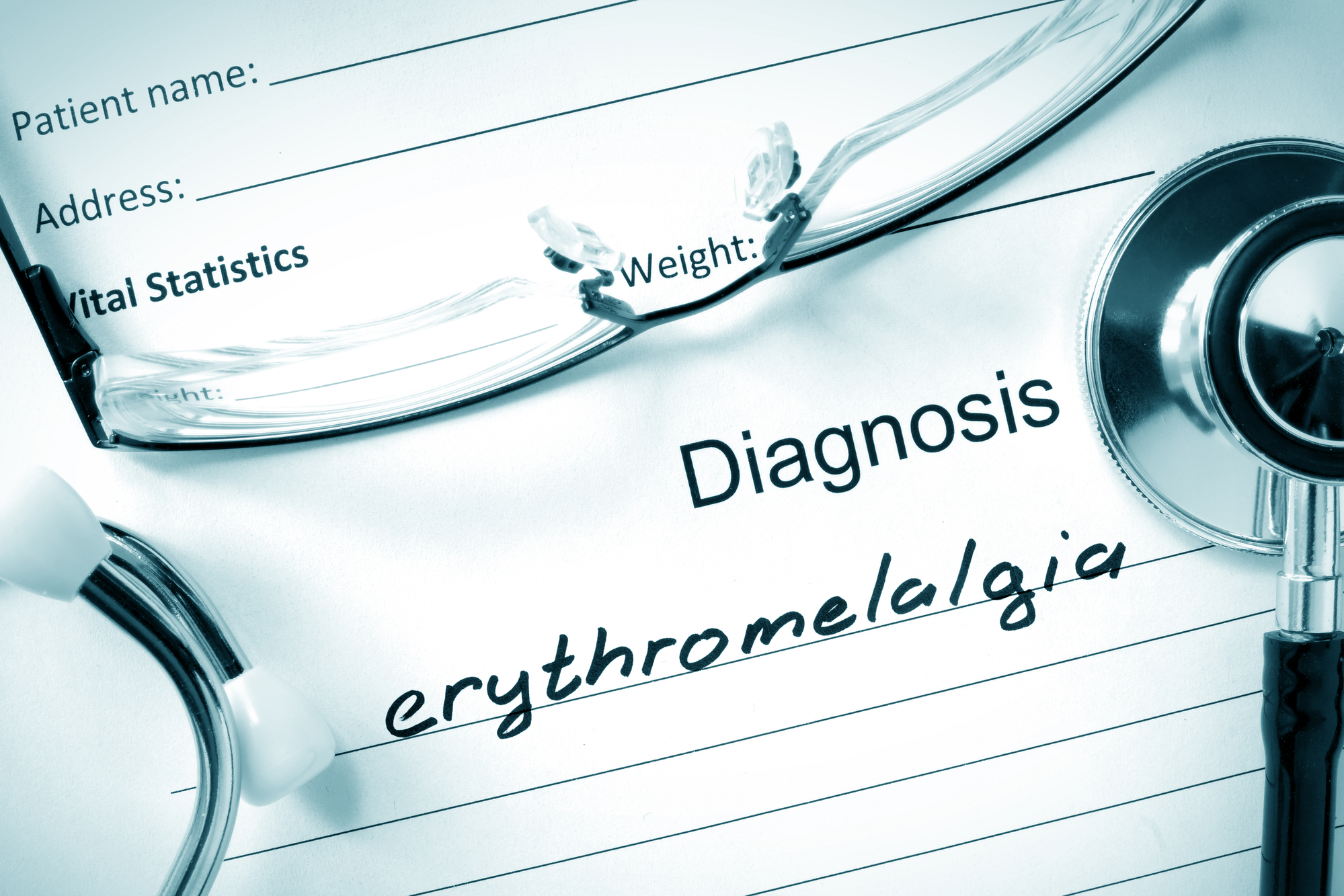What are chilblains?
Chilblains are a painful inflammatory reaction to the build up of waste products in the skin when the microcirculation does not respond properly to changes in temperature in the colder climates. When the skin becomes cold, the small blood vessels close up to conserve heat. When the foot gets warm again, those blood vessels, for some unknown reason, remain closed for longer than they should. This means that there is not enough blood circulation to the superficial skin for a short period of time and waste products build up leading to the inflammatory reaction. The blood vessels will at some stage suddenly open and that rush of blood to the superficial skin causes that red painful area that is so typical of chilblains.
How to tell if you have a chilblain?
The typical appearance of a chilblain is a reddish, painful and itchy skin lesion that appears in the colder climates on the toes and foot. On rarer occasions its on the fingers and on even rarer occasions its on the nose and ears. After a period of time, the lesion on the skin may take on a more darkish color or the skin may break down. Recurrence, even on a daily basis, are common so they tend to become chronic with more pain and swelling with a dark bluish color developing.
Below are examples of chilblains:
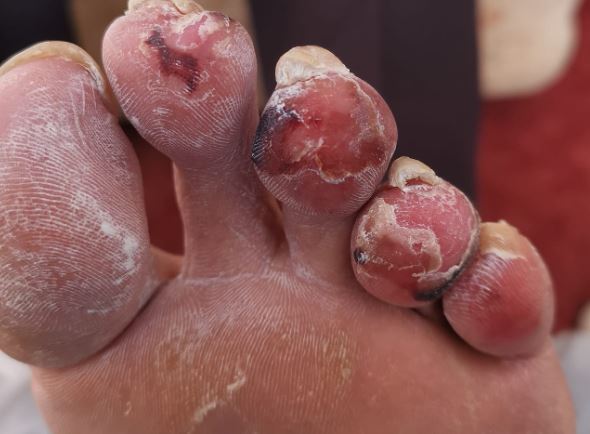

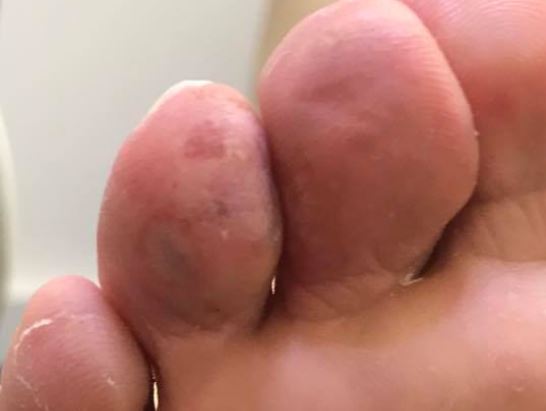
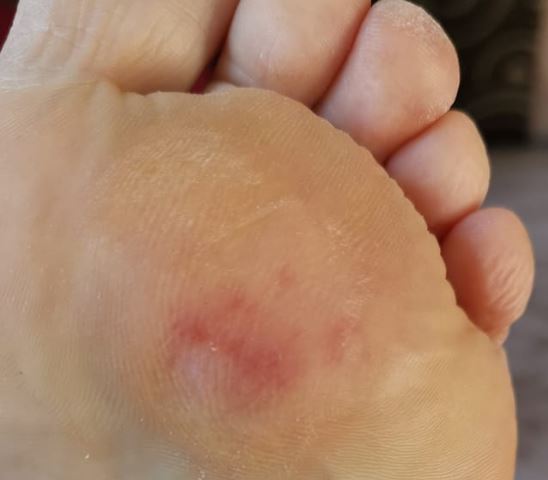
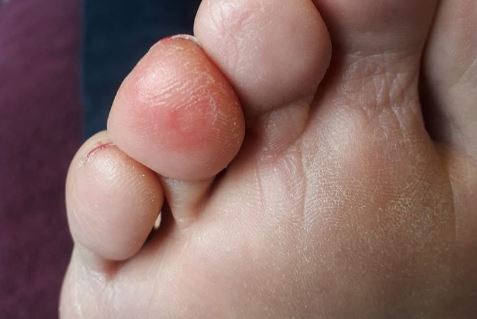

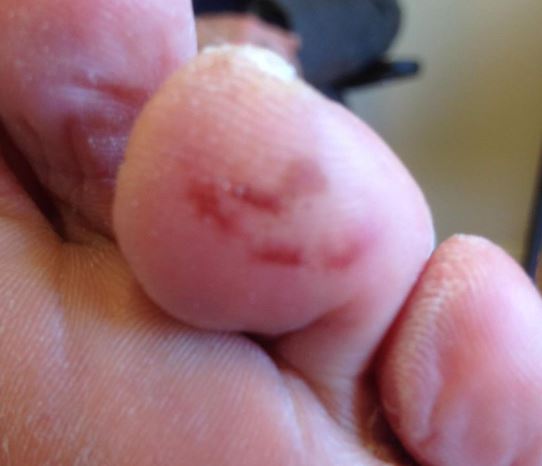

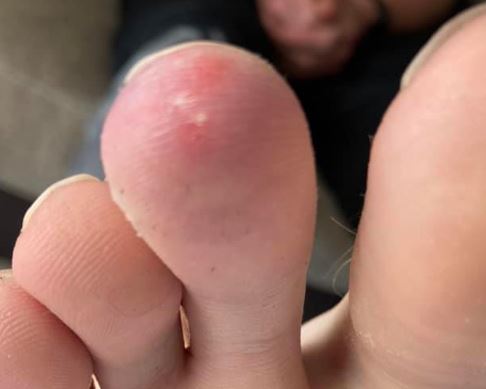


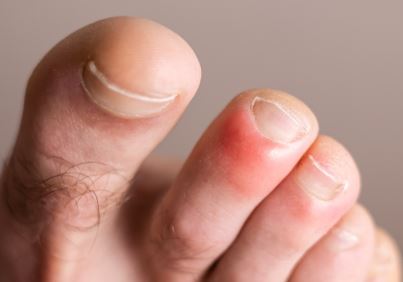
Treatment of Chilblains:
If you get a chilblain, then you need to throw the kitchen sink at it. Do not try a treatment and then if that does not work, try something else and so on.
The first thing that you are going to need to do is keep the foot warm. Avoid cold as much as possible Wear two pairs of socks and closed in shoes if you have to go outside. Cashmere wool socks are better than merino wool socks. Two pair are better than one.
If your feet do get cold, then warm then up very slowly. Let the skin warm gradually so that those blood vessels that closed up in the cold are given a chance to open up to meet the metabolic requirements of the skin. The worse thing you can do is place your feet in front of a heater to warm them – that is a good way to cause a chilblain as the skin is warmed up too quickly.
There are several chilblain creams that you can use. They all tend to work a bit differently and there is a variable response between different creams so you might need to experiment to find the one that suits you the best. What works for you with regards to the cream or ointment may or may not work for the next person. What is of importance here is to spend time rubbing the cream into the toes a couple of times a day. This massage may be just as important as the type of cream that you use at stimulating the microcirculation and removal of the waste products.
If the skin is broken, then you are going to need an antiseptic and wound dressing to keep it clean and prevent an infection developing until that breakdown heals up.
Make sure that you eat well. Make sure you have a healthy diet, perhaps taking a multi-vitamin to make sure that you are getting enough vitamins. Smoking is definitely a no if you are serious about your chilblains. There is no magic diet or supplement that is going to cure chilblains (despite all the claims you might see).
The above should take care of most chilblains, but if they are not, then speak to your doctor about a drug called nifedipine that does seem to benefit some people with chilblains as this drugs keeps the blood vessels open. It works on the whole body and not just the toes, so any benefits have to be weighed up against the risk and what might happen elsewhere in the body because of that.
Prevention of Chilblains:
Chilblains are best prevented by using three approaches:
- Keep the feet warm. If you have a history of chilblains wear two pair of socks and closed in shoes if you go outside. Cashmere wool is better than merino wool and two pairs are better than one
- If you do get cold, then warm the feet very slowly. DO NOT put your feet in from of a heat source such as a heater if you are coming in from outside. Feet that become warm too quickly after getting cold is a sure fire way to massively increase the chance of getting a chilblain.
- Be healthy. Eat a good diet, perhaps take a multivitamin. Don’t smoke and get adequate sleep and do some exercise.
The best way to treat a chilblains it to prevent it in the first place.
As always, if chilblains are a problem for you or you have any concerns, then consult a podiatrist.
Forum Discussions & Questions on Chilblains:
Anyone got some advice for chilblains?
What cream is good for chilblains?
Pathophysiology of Chilblains
Chilblains / perniosis
Chilblains and Covid-19 (Covid Toes)
Chilblains Treatment
Chilblains
Swollen itchy toes
Swelling during cold weather – inflammation
Chilblains
Videos on Chilblains:
PodChatLive Episode in Chilblains
PodTube
Personal Opinion:
My personal opinion is that you need to stay out of the cold as much as you can and when or if you go out into the cold wear two pairs of cashmere wool socks and good closed in shoes or boots. When you get a chilblain, use a good chilblains cream and spend quite a bit of time rubbing the cream in. I sometimes think that the physical rubbing may do more good to actually stimulate the circulation than the nature of the actual brand or type of cream used.
Chilblains can be quite a problem for a number of years and for no particular reason that we know of, they just stop happening. It would be nice to know why, then that knowledge can be applied to prevention and treatment strategies. That is just the natural history of them. It could be tied up to hormonal issues in females and there is plenty of research that has looked at hormones and the microcirculation and that has to have something to do with chilblains. It would be nice to know just what and see the research on it progress forward so that we can get better treatments.
Sadly that natural history of just stopping at a random year in a number of people (but not all) can lead to the support of a number of myths and old wives tails about the treatment. For example, “I used x to treat chilblains and have not had them since“. They have no way of knowing if it was “x” or just that natural history as being the reason for them no longer getting the chilblains. This myth is often seen in the comments section on articles about how urine therapy does not work for chilblains: “I used to pee on my chilblains and they have not happened since“. Trying to convince them that it was probably not the urine and more likely the natural history of the condition never is going to work.
I previously worked clinically in Christchurch, New Zealand and in Melbourne, Australia (currently in Croydon), so have spent all that time in the climate that is conducive to the development of chilblains. Generally we have been able to do a pretty good job at managing the problem with the strategies discussed above. Only once in all that time have I had one patient in which the symptoms of her chilblains were so bad despite throwing the kitchen sink at her and nothing was really helping, that I strongly advised her to move north and live in a warmer climate.
Author:
University lecturer, runner, cynic, researcher, skeptic, forum admin, woo basher, clinician, rabble-rouser, blogger, dad.

